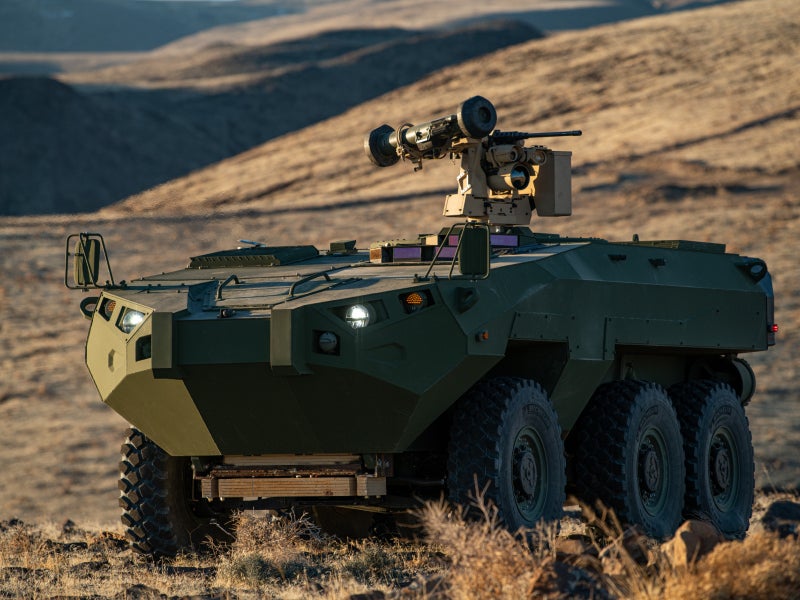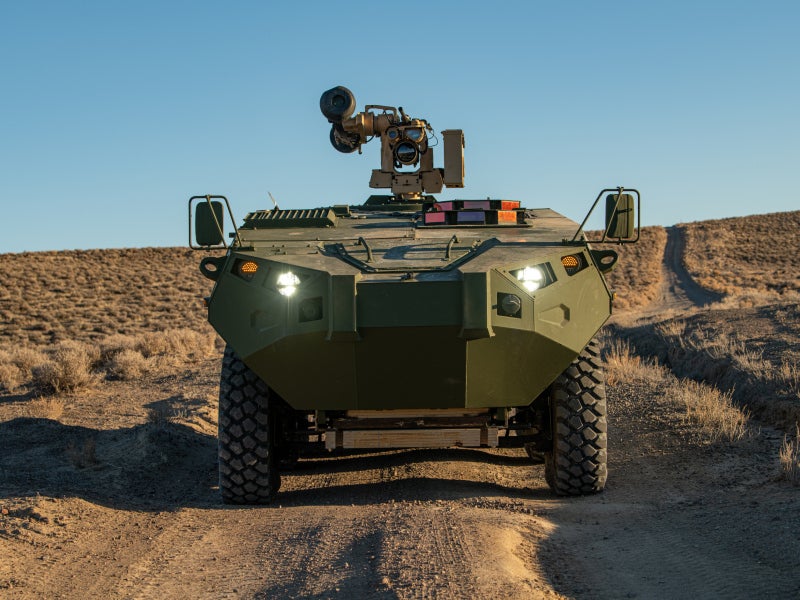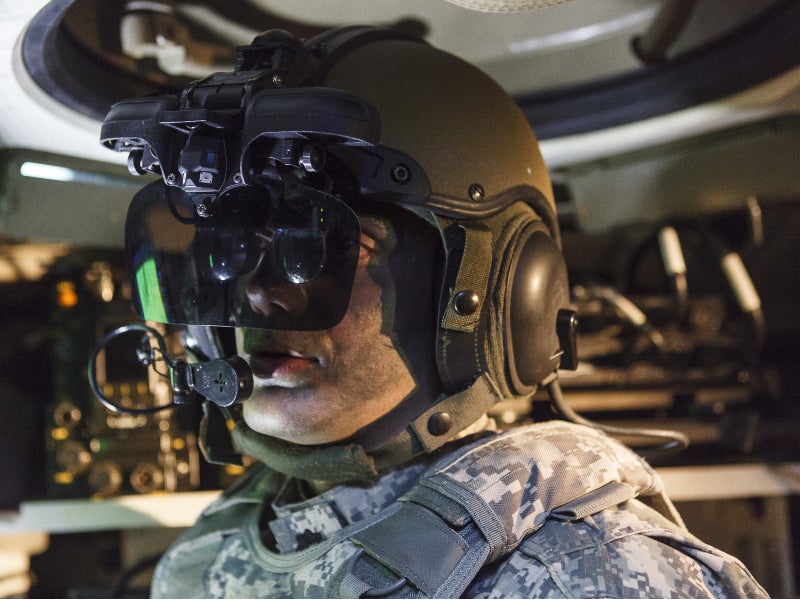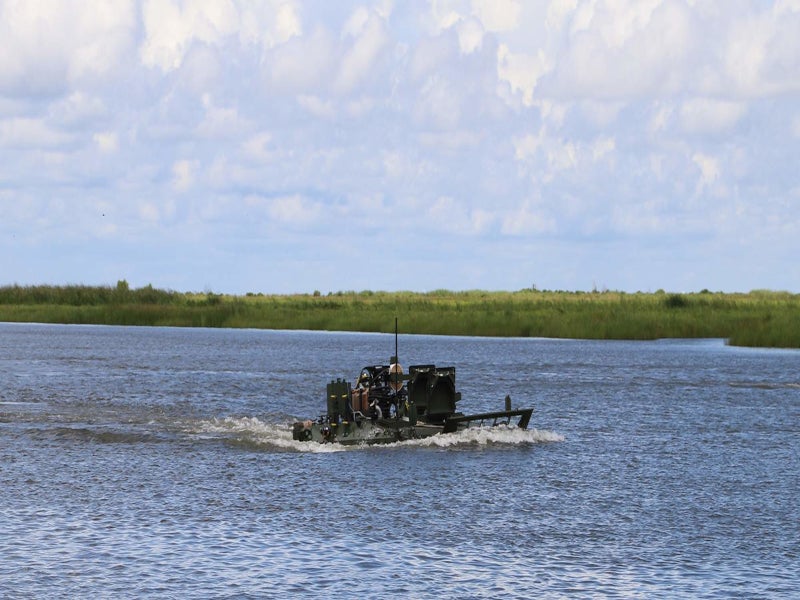Cottonmouth is a purpose-built prototype advanced reconnaissance vehicle (ARV) developed by a partnership between Textron Systems (Textron) and Elbit Systems of America for the US Marine Corps (USMC). The vehicle was built in response to the USMC’s ARV programme.
The USMC selected Textron and General Dynamics Land Systems (GDLS), a subsidiary of General Dynamics, in July 2021 to start negotiations for contracts to build prototypes for the ARV programme.
The validation testing of Cottonmouth commenced at the National Automotive Test Center in February 2021.
Textron and Elbit unveiled the Cottonmouth next-generation ARV prototype in May 2021. Textron completed building the Cottonmouth ARV prototype vehicle in August 2022 and handed it over to the USMC in December 2022.
The USMC will assess the capabilities of the prototypes delivered under the ARV competition and select a winning model in 2023.
Technical specifications
The Cottonmouth 6×6 reconnaissance vehicle has a length of 270in (6.8m), a width of 114.5in (2.9m,) and a height of 121.9in (3.09m). The gross weight of the vehicle is 37,000lb (16,783kg).
The ARV can attain a maximum speed of 65mph (104.6km/h) and withstand wave heights of 4ft (1.21m). The vehicle is operated by a crew of two and can carry up to five Marines.
Cottonmouth ARV design and features
The vehicle features a compact design and was built based on an open architecture platform to enable the integration of advanced systems in the future.
Four Cottonmouth ARVs can be transported using a single ship-to-shore Connector (SSC), which is a landing craft air cushion (LCAC) vehicle.
The ARV is equipped with multi-spectrum sensors and stealth capabilities. The sensors enable seamless communication between the Navy and Marine Corps during joint missions, allowing them to deploy uncrewed systems, as well as weapons systems.
The vehicle is designed to provide enhanced manoeuvrability.
Mission capabilities
Cottonmouth is a next-generation amphibious vehicle designed to serve as the naval sensor node of the USMC. The synergised sensor system of the vehicle will support reconnaissance operations.
It can be deployed in support of expeditionary advanced base operations. It will provide enhanced land and amphibious mobility.
The versatile platform can be used as a force-multiplier and to support electronic warfare missions. The automatic target recognition capability allows operators to see enemy platforms before the ARV is detected.
Cottonmouth will be able to defeat threats beyond the line of sight.
Sighting system
As part of the partnership, Elbit Systems of America will provide the situational awareness vision suite for the Cottonmouth prototype.
The ARV will be equipped with Elbit Systems of America’s IronVision™, a see-through, head-mounted display technology that provides crewmembers with enhanced visibility and 360° situational awareness.
The IronVision™ system will combine pre-loaded terrain and obstacle information, as well as smart battlefield symbology, to provide a single, unified picture of the surroundings simultaneously to all crew members.
The enhanced situational awareness will increase the lethality and safety of the platform and crewmembers. The comprehensive picture will be displayed on the IronVision™ helmet-mounted display and crew workstations, enabling the crew to see through the vehicle’s armour.
US Marine Corps’ ARV programme details
The USMC plans to replace its ageing fleet of light armoured vehicles (LAV), which have been in service since the 1980s, and whose lifecycle is expected to expire in the mid-2030s.
The new ARV will replace the USMC’s existing LAV fleet. The procurement requirement is for a highly mobile, networked, transportable and lethal armoured vehicle. It will be able to sense, shoot, move, and communicate.
The USMC also requires the ARV to operate as part of a teaming arrangement with crewed/uncreweded systems and serve as the manned hub of such a team. The ARV is expected to provide multi-domain, mobile reconnaissance capabilities.
The Office of Naval Research (ONR) announced in September 2019 that it would sponsor research for the development of a next-generation ARV for the USMC.
The effort to develop the vehicle is part of the Department of Navy’s Future Naval Capabilities programme, whose aim is to identify, evaluate, and accelerate new technologies to make them ready for acquisition.
ONR outlined that the future ARV will be equipped with transformational sensors, communications, and combat capabilities. It also highlighted the need for the ARV to be able to detect and identify threats from longer distances.






